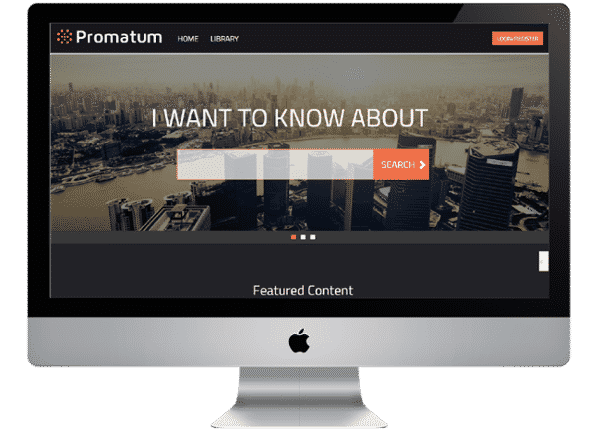10 Tips for Generating Better Sales Leads

It’s never easy trying to generate new sales leads. Your product can be the best thing since smartphones, but if no one knows your company, how can you convince them to buy? These ten tips should help you secure viable leads. The rest is up to you.
-
Brain Over Brawn
Numbers are important and shifting products is your priority, however if you want to build a trusting relationship with your customer, you need to use brain over brawn, and ditch the hard sell. Once you’ve identified your target segment, investigate what the trends are, how the top organisations do business, and what their likely needs are. Once you’ve generated a lead, take the time to get to know that prospective decision maker. This is the only way to truly match your product to their needs, and why account-based marketing is successful. Next comes your email campaign.
-
Emailing
Unless your company is a household name, sending cold emails about your products is pretty pointless. It’s far better to use your email campaigns to send useful resources about solving a particular problem. This introduces your organization and builds trust. Don’t attach the resource to the email for two reasons: an attachment will probably not get past any filters, and you want to get people to the landing page.
-
Create an Engaging Landing Page
Your email campaign will need a compelling landing page. The three most important features on a landing page are headline, banner image and call-to-action, which could be a link or contact form. Use a problem-solving headline to get visitors interested, e.g., “A Simple Way to Increase Productivity”. They want to know how your product/service will help them achieve a specific goal. Images need to be eye-catching and used sparingly. It’s tough to get your message across if the page is too busy. Keep text to concise chunks that are broken up about the page. The CTA button needs to stand out without overpowering your message.
-
Something for ‘Nothing’
Prospective customers are far more likely to hand over their details (like a direct dial phone number) if you’re offering something in return. This could be an ebook / white paper, or invitation to join a free webinar. The ‘gift’ needs to be truly useful and contain quality content. This type of lead costs you almost nothing and should be far easier to convert than a cold call.
-
The E-learning Factor
If you’re marketing a technical or knowledge-based product, it can be hard to explain the finer points to a prospective buyer. Sure, you can give them a brochure or manual, but unless they’re experts in the field, all the amazing reasons why your product fits the bill will be lost on them. It’s a far better approach to use a suitable knowledge-sharing platform with custom content. According to the Social Science Research Network, 65% of the population are visual learners, which is why using video is a great way to showcase your product. Create succinct chunks of two minutes of less, keeping technical jargon to a minimum.
-
Quora
Quora.com is a fantastic way to generate leads, particularly for technical products. Once you’ve registered for a free account, use your expertise to answer questions that are relevant to your product. If you do it well and don’t turn it into an advertorial, readers will follow your subtle link to the website. You can also ask questions. Ask a question about a problem that you know your product can solve – then answer it. You should soon find that people are seeking you out to answer questions.
-
Write!
Writing articles on technical topics related to your product can definitely bring more hits on your website. Blogging is a great way to attract followers, and WordPress is a popular platform. But realistically, who has time to regularly blog? Instead, try getting an informative article published on LinkedIn. This will carry weight with prospective customers and raise your profile in the community. And these days LinkedIn is used almost as much for generating leads as head hunting.
-
Social Listening
Twitter is a simple way to monitor conversations of prospective leads. Search using terms related to your product, then click follow. If you are followed back, don’t forget to send a thank-you message with the offer of a free resource. Respond to tweets when appropriate, offering advice and information. Don’t push your product at that point! See if they open up lines of communication first.
-
Easy Market Research
A clever way to engage visitors on your website is to embed a quiz or survey on your homepage. SurveyPlanet offer unlimited free surveys if you sign up. If you don’t make it too complicated or too long, it will actually engage visitors and provide invaluable market research. You could require an email address to take part but this will put some people off. It depends on whether your primary goal is research or lead generation. Twitter surveys are a great way for gathering info about your target market.
-
Advertise
PPC using Google Adwords allows you to target key search terms, then set your parameters, such as area and daily budget. You can start modestly and see what happens. The beauty is that your ad will only appear if the relevant search terms are used, so it’s appearing to a targeted audience. You only pay if someone clicks the link and visits your site. You can even put a signup form in the ad itself. A more economical solution is a boosted post on Facebook, which allows you to target age, interests and area, as well as setting a daily budget so there are no nasty surprises.
-
Social Media (bonus tip for reading this far)
It’s highly recommended that you use social media (Facebook, Twitter, Instagram, YouTube, Sound Branch) to promote products but more importantly, to share useful advice and resources. We’ve talked about social listening on Twitter, but it’s important to have a presence on all the major platforms. Use social media to post links to your blog, ebooks, and webinars. Set up your own channel on YouTube or Vimeo, and upload how-to videos and in-depth information about your products. The ability to schedule posts on Hootsuite is very useful when time is at a premium.


